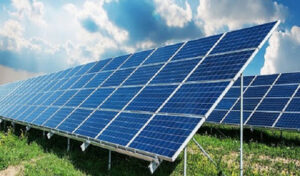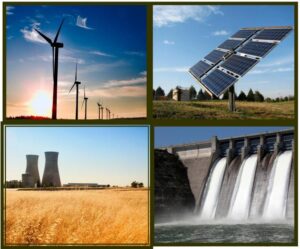Difference between Conventional and Nonconventional Sources of Energy
-by Ishita Mondal
–Edited by Srishti Bhattacharya
–Reading Time – 16 min Approx
From the questions like what energy is to the difference between conventional and nonconventional sources of energy is – is an intriguing question. Whether it is running a machine or cooking food, energy is a vital factor to look upon. In other words, it is one of the main reasons that we can perform any task in our daily life. No matter how small the task is, you cannot perform it without some sort of energy.
In every field like industry, healthcare, agriculture, education, sports, communication, IT, etc. energy is used vigorously. Therefore, it has become important to know more about energy. Considering the different factors, the sources of energy are often classified into conventional and non-conventional energy. Here, this article will shed light upon the details of energy. So, let’s proceed.
What is Energy – The Definition:
Simply put, energy is the ability to perform any work. It cannot be created or destroyed in any way but can be transformed from one form to another. The different forms of energy are – heat, light, electricity, motion, gravitation, and chemical. Sometimes, energy comes in the stored form, and sometimes it is found as kinetic energy.
Now, let’s take an example of how energy is converted from one form to another. The kinetic energy in water produces the essential electrical energy to run machines or perform any other relevant task. When a person eats, it gains stored chemical energy which is transformed into some sort of kinetic motion energy. It allows us to work, play, run bicycles, and so on.
Our whole world largely depends upon different sources of energy. The consumption of energy directly affects the growth and sustainability of the economic structure in any country. It is essential to know that the development of a country is often measured by the per capita consumption of energy in that country. So, it is evident how far energy is a part of our life. Energy comes from a wide range of resources. Now, let’s move towards the classifications of energy resources.
The Classifications of the Sources of Energy:
The first thing you should know about energy is how energy resources are classified. You must also know how the resources differ from each other. Nonetheless, energy is majorly classified into conventional and non-conventional energy. You can find them in two other names as well – renewable and non-renewable energy. Traditional or renewable energy is divided into two major types –commercial non-commercial.
In further sections of our article, we have discussed the classifications in detail.
First, you can learn about the difference between conventional and non-conventional sources of energy.
The article will be focusing on every minute detail of these sources of energy. From what it is to the examples of them and how the two differ from each other, you can find everything.
Difference between Conventional and Non-conventional Sources of Energy – the Definitions:
Conventional energy or non-renewable energy is a group of energy forms used since the birth of human civilization. Most of these energies are produced from the decaying matters suppressed beneath the earth. The environment experts have named it non-renewable energy. The reason behind the name is that these energies cannot be re-generated once they are used. Some of the most-used conventional energy sources are coal, petroleum, natural gas, and electricity.
Since the beginning of civilization, conventional energy sources have been used and gradually been exploited. Because of this, the sources are now quite limited. And as we all know, necessity is the mother of invention. Therefore, the risk of the unavailability of conventional energy sources leads to the discovery of renewable energy.
Non-conventional energy or renewable energy is called so because this kind of energy is renewed easily through the natural process once used. For the last few decades, these sources have been used to compensate for the limited sources of traditional energy. Hence, non-conventional energy is energy derived from non-conventional sources. Examples of renewable energy are solar energy, wind energy, tidal energy, etc. As the days are passing on, ecological sustainability is becoming a serious matter of concern. The threats like pollution and global warming are hovering around us.
Amidst these chaotic circumstances, renewable energy help to reduce the environmental pollution that often comes out due to the heavy use of conventional energy sources. Another benefit of non-conventional resources is that it does not need to be spent in a large amount. However, the initial cost of installation and utilization of them is still higher than the traditional energy. But as soon as it will be more in use, the price will decrease, and the world will be moving towards sustainable ecological development.
How the Sources of Non-conventional Energy and Conventional Energy Differ from Each Other:
You know now the definitions of conventional and non-conventional energy. Let us now have a quick look at the difference between conventional and non conventional sources of energy.
| Factors | Conventional | Non-conventional |
| Availability | The sources are limited, not abundantly available in nature. | It is abundantly available in nature. |
| Usage | It is in use since the birth of human civilization. | These energies are in use for the last few decades. |
| Other names | They are known to be renewable sources of energy. | They are known to be non-renewable sources of energy. |
| Risk of scarcity | These sources can be exhausted if humans use them excessively. | These sources will never be exhausted completely. |
| Pollution and ecological sustainability | Environmental pollution may arise as these sources emit harmful gases. Also, they aren’t eco-friendly and cause global warming. | There is no risk of pollution with these. These sources of energy are eco-friendly. |
| Purpose of Use | They are used majorly for industrial and commercial purposes. | These sources are used for household purposes. However, nowadays many organizations and commercial sectors are also planning to use them. |
| Expenditure and cost | The use of these sources is extensive. But the cost is reasonable. | These sources of energy are not used vigorously. However, the initial cost for using these energies is still a bit high. |
The Examples of Conventional and Non-conventional Energy Sources – A Detailed Study:
Examples of conventional energies are coal, petroleum, natural gas, etc., and that of non-conventional energies are tidal energy, solar energy, wind energy, biofuel from biomass, etc. Here, we discuss the examples of conventional energy sources and non-conventional sources of energy in detail. This will help you to understand the differences between them.
As we discussed earlier, conventional energy sources can be of two types: commercial and non-commercial. Most of the traditional energy sources come under the commercial category. It is called so because to access these sources, the consumers need to pay a certain price. So, let’s get into the details of some of them.
Conventional Sources:
-
Commercial :
-
Coal:
With near about 15000 coal mines, the annual production of coal in India is approximately 343 million tons. The coal mining areas are mostly found in the states like Bihar, Orissa, Bengal, etc.
-
Electricity:
Among all of the conventional energy sources, electricity is used the most for commercial purposes. From TV to refrigerator, the use of electricity is widely distributed. However, electrical energy is generated through the transformation from other energy sources like coal, oil, etc. Also, the flowing water and uranium fuel used in nuclear power stations are other sources for producing electrical energy.
-
Noncommercial:
As you can see, most of the traditional sources of energy are used for commercial purposes. However, some sources do not contribute much yet to trade and commerce. Such non-commercial energy sources found in different parts of India and many other areas are dried cow-dung cake, firewood, hay, dry straw, dry grasses, etc.
Non-conventional Sources:
-
Solar:

One of the most popular non-conventional energy sources is sunlight. The energy derived from sunlight is transformed into electric energy.
-
Wind:
Such energy is produced by controlling the power of the wind. It is primarily used in operating water pumps for irrigation in the lands.
-
Tidal:
Water is a powerful element of nature. Tidal energy is therefore generated using the power of water waves. Well, this is a costly option due to the scarcity of proper equipment.
Conventional and Non-conventional Energy – Some Frequently Asked Questions:
- What are the pros and cons of conventional energy sources?
- The pros are:
- High efficiency.
- Low expense.
- Proven method.
- The cons are:
- Causes pollution.
- Can be drained out with excessive use.

Image Courtesy : Daily Times Nigeria
- The pros are:
- What are the advantages of non-conventional energy?
- These energy sources are environment friendly.
- The sources are unlimited.
- They are renewable.
- What are the disadvantages of nonconventional energy?
The sources are costly. They are still not much well-known, experiments are conducted on them.
- Which is the most used non-conventional energy?
Solar energy is the most used non-conventional energy source.
- Can I use solar energy for cooking?
Yes, you can use it for cooking, boiling water and so on.
- Does solar energy include different technologies in its process?
Yes, being a non-conventional source of energy, solar energy incorporates many technologies. From deriving the sunlight to transforming it into electricity – everything is tech-driven. Solar thermal technologies consist of a solar concentrator power system, passive solar heating, and a flat collector plate. The photovoltaic or PV is used to convert solar power into electricity.
Bottom the Line:
So, here we have discussed everything about the difference between conventional and non-conventional sources of energy. I hope this will help you to learn about these essential factors. If you have any more queries, click on the comment section below.
-by Ishita Mondal


